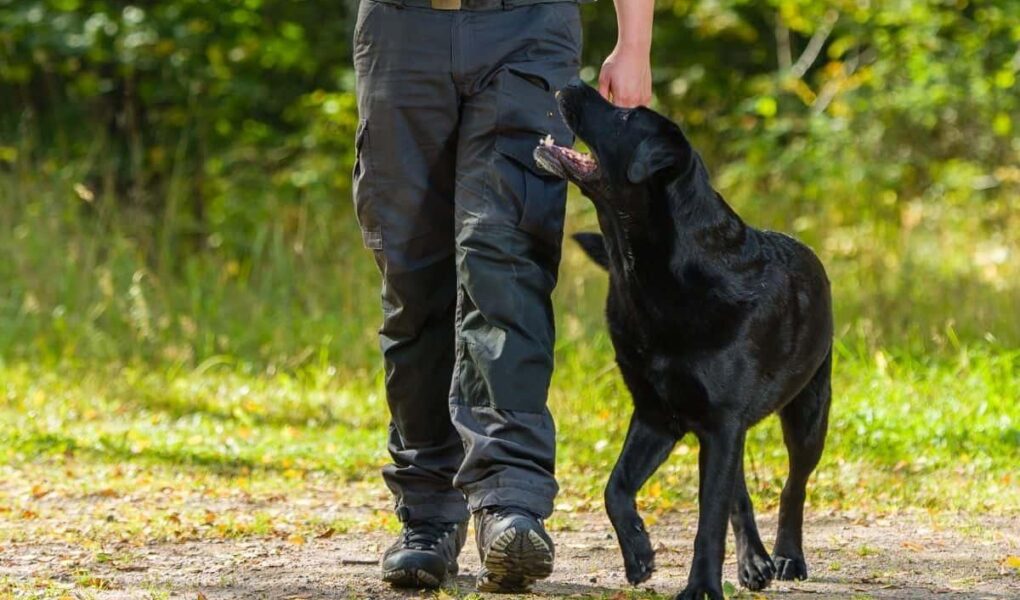Unleashing the Art of the Heel: A Guide to Mastering Dog Training
In the world of canine companionship, few commands are as pivotal as “heel.” This seemingly simple command holds the key to transforming a leisurely stroll into a synchronized dance between handler and dog. Imagine a scene where your furry friend walks calmly by your side, their energy focused and their excitement tempered. For many dog owners, achieving this harmonious partnership is a journey filled with challenges, rewards, and moments of profound connection.
Whether you’re a seasoned trainer seeking to refine your techniques or a new pet parent eager to establish a solid foundation, understanding the intricacies of the “heel” command can enhance your bond with your four-legged companion. In this article, we will explore the underlying principles of this essential command, provide practical tips for effective training, and celebrate the joys that come from mastering the art of the heel. As we delve into this topic, let’s take a closer look at how a simple command can open the door to a more enjoyable and fulfilling life with your canine companion.
Table of Contents
- The Importance of Mastering the Heel Command for Your Dog
- Techniques for Teaching Your Dog to Heel Effectively
- Common Challenges in Heel Training and How to Overcome Them
- Enhancing Your Dogs Heel Skills Through Positive Reinforcement
- Q&A
- To Conclude
The Importance of Mastering the Heel Command for Your Dog
Mastering the heel command is a cornerstone of effective dog training, fostering a deep bond between you and your canine companion. When your dog walks at your heel, it not only ensures their safety but also allows for greater control in various environments. The ability to guide your dog seamlessly through crowded areas, busy streets, or tranquil parks can significantly reduce stress for both you and your pup. This command teaches your dog to be attentive to your movements, creating a synchronized rhythm that enhances your communication. In turn, this can lead to a more enjoyable and harmonious experience during walks.
In addition to the practical aspects, the heel command nurtures the development of discipline and focus in your dog. Puppies and adult dogs alike benefit from engaging their minds and learning the importance of following commands. While training for the heel command, consider including these elements in your sessions:
- Consistency: Regular practice solidifies the behavior.
- Positive Reinforcement: Reward your dog for heel successes, encouraging them to repeat the behavior.
- Short Sessions: Keep training sessions brief and enjoyable to maintain your dog’s interest.
Ultimately, combining these strategies with patience will significantly enhance your dog’s ability to master the heel command. The investment in this training yields invaluable rewards—creating not just a well-behaved dog, but also a deeper connection and understanding between you and your furry friend.
Techniques for Teaching Your Dog to Heel Effectively
Teaching your dog to heel is about creating a strong bond and effective communication through consistency and positive reinforcement. Start by establishing a clear command, such as “heel.” Use a short leash and reward your dog with treats for any attempt to stay by your side. Here are some effective methods:
- Use of treats: Keep a handful of small, tasty treats within reach. Reward your dog for walking closely next to you.
- Frequent pauses: Every few steps, stop walking and reward your dog for maintaining position. This teaches your dog to pay attention to your movements.
- Incorporate turns: Change direction unexpectedly to keep your dog engaged and foster their focus on following your lead.
In addition to positive reinforcement, you can integrate activity variations to keep training fun. Try practicing in different environments, such as parks or bustling streets, as it helps your dog generalize the command. Below is a simple table that outlines fun alternative exercises:
| Exercise | Description |
|---|---|
| Obstacle Course | Set up a series of items for your dog to weave through while heeling. |
| Musical Heeling | Play music and walk in sync with your dog, stopping when the music pauses. |
| Heel and Treat Stations | Place treat stations at intervals and reward your dog for walking beside you to each one. |
Common Challenges in Heel Training and How to Overcome Them
Heel training can often be challenging for both dogs and their handlers. One common issue is the lack of consistency in commands and rewards, which can confuse the dog. When different family members use varied cues or fail to reinforce successful behavior reliably, the dog may struggle to understand what is expected. To overcome this, establish a clear command for “heel” and ensure everyone involved in training uses it consistently. Additionally, utilize positive reinforcement; rewarding the dog with treats, praise, or toys when they correctly respond to the command can motivate them to stick by your side.
Another frequent hurdle is the dog’s natural inclination to be distracted by their surroundings. Whether it’s other dogs, people, or enticing smells, these distractions can make maintaining a heel position difficult. To combat this, begin training in a low-distraction environment and gradually introduce new settings as the dog masters the skill. Incorporate short, energetic training sessions to keep their attention and enthusiasm high. Don’t hesitate to use body language and maintain eye contact to guide your dog, making the experience engaging and interactive.
Enhancing Your Dogs Heel Skills Through Positive Reinforcement
Mastering the heel command with your dog can turn strolls into a harmonious experience. By utilizing positive reinforcement, you not only teach your furry friend the correct position at your side but also foster a strong bond built on trust and communication. Start with short training sessions in a quiet area where distractions are minimal. Use enticing treats, enthusiastic praise, or favorite toys as rewards when your dog aligns with your heel. The key is to focus on the behavior you want to encourage, thus transforming the heel command into an enjoyable challenge for both you and your dog.
To make the learning process even more effective, consider the following tips:
- Consistency is Crucial: Practice the heel command at the same times and places. This helps your dog understand that heel means the same thing, no matter where you are.
- Gradual Progression: Start in low-distraction environments and gradually add more challenges as your dog improves.
- Short, Engaging Sessions: Keep training sessions around 5-10 minutes to hold your dog’s attention and prevent frustration.
- Celebrate Small Wins: Reward improvements, no matter how small, to keep your dog motivated.
Incorporating these strategies will not only refine your dog’s heel skills but will also make the process enjoyable for both of you. The joy of walking together in sync, with your canine companion trotting alongside you, is worth the effort!
Q&A
Q&A: Understanding the Art of Dog Heeling
Q: What is “dog heel”?
A: “Dog heel” refers to a position where a dog walks closely alongside its handler, typically on the left side, with its head aligned with the human’s leg. This position is not only a display of training and obedience but also facilitates better control during walks or in various working environments.
Q: Why is teaching a dog to heel important?
A: Teaching a dog to heel is crucial for several reasons. It promotes safety during walks, allows for smoother navigation through crowded spaces, and strengthens the bond between the dog and its owner. Additionally, a well-trained heel can enhance a dog’s overall discipline and focus, making outings more enjoyable for both parties.
Q: What age should I start training my dog to heel?
A: You can begin teaching a dog to heel as early as eight weeks old. At this young age, puppies are keen to learn and adapt to new commands. However, training can continue throughout the dog’s life, and older dogs can also learn the skill with patience and consistency.
Q: What are some effective techniques to train my dog to heel?
A: There are several effective techniques to teach a dog to heel, including:
- Positive Reinforcement: Use treats or praise to reward your dog when they are in the correct position.
- Leash Guidance: Start with your dog on a leash and gently guide them into the desired position.
- Hold the Treat: Keep a treat in your hand at your side to encourage your dog to stay close.
- Practice Short Distances: Begin with short walks, gradually increasing the distance as your dog becomes more comfortable.
Q: Can all dog breeds learn to heel equally well?
A: While all dogs have the capability to learn how to heel, some breeds may naturally have a stronger inclination towards obedience and compliance. More energetic or stubborn breeds may require additional patience and consistent training techniques, but with the right approach, any dog can learn to heel effectively.
Q: How long does it usually take for a dog to learn to heel?
A: The time it takes for a dog to learn to heel varies depending on the dog’s age, temperament, and prior training experience. Some dogs may master the skill in a matter of weeks, while others might take a few months. Regular practice and reinforcement are key to success.
Q: What are some common mistakes to avoid during heel training?
A: Common mistakes to avoid include:
- Inconsistency: Use the same commands and rewards every time to avoid confusing your dog.
- Rushing the process: Allow your dog to learn at their own pace and celebrate small victories.
- Neglecting distractions: Gradually introduce distractions once your dog is comfortable heeling in a controlled environment.
Q: How can I reinforce the heel command in everyday life?
A: Incorporate the heel command into your daily routine by practicing during walks, at the park, or while running errands. Reward your dog for maintaining the heel position and gradually increase the duration and distraction levels for an added challenge.
Q: Are there any benefits to heeling beyond obedience?
A: Absolutely! Heeling can enhance the bond between you and your dog, promoting teamwork and understanding. It also provides mental stimulation for your dog, turning walks into purposeful activities rather than just casual outings.
Through consistent practice and patience, you and your dog can enjoy the journey of mastering the art of heeling, creating a harmonious walking experience together. Happy training!
To Conclude
As we conclude our exploration of the “dog heel,” it becomes clear that this simple command transcends mere obedience; it embodies a deeper connection between dog and owner. Through patience, consistent training, and an understanding of canine behavior, the heel becomes not just a position, but a symbol of trust and partnership. Whether you’re a seasoned trainer or a novice dog owner, embracing the nuances of this command can enrich your daily walks and strengthen your bond with your furry companion. So, as you step out the door with your dog by your side, remember that each ‘heel’ is a step toward building a harmonious relationship—one that is rooted in respect, communication, and shared joy. Happy training!



